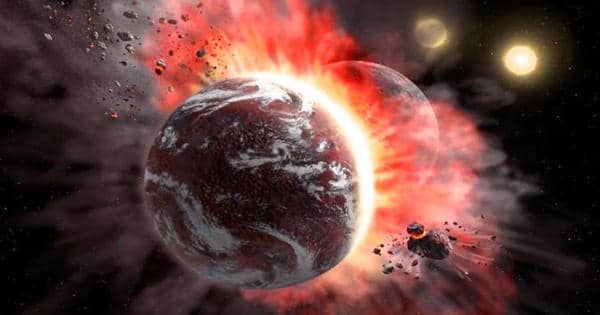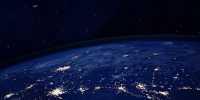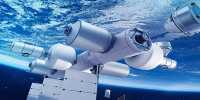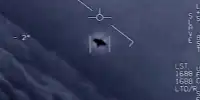Astronomers have made a breakthrough in their understanding of how the Moon may have formed as a result of a massive collision between the early Earth and another massive object 4.5 billion years ago. Scientists led by Durham University in the United Kingdom used supercomputer simulations on the DiRAC High-Performance Computing facility to crash a Mars-sized planet called Theia into the early Earth. Their simulations resulted in an orbiting body that could evolve into a Moon-like object.
While the researchers caution that this is not conclusive proof of the Moon’s origin, they add that it could be a promising step toward understanding how our nearest neighbor formed. The findings were published in the Royal Astronomical Society’s journal Monthly Notices.
The Moon is thought to have formed as a result of a collision between the early Earth and Theia, which scientists believe was an ancient planet in our solar system about the size of Mars. Researchers used simulations to track material from the early Earth and Theia for four days after their collision, then spun Theia like a pool ball. Depending on the size and direction of Theia’s initial spin, the simulated collision with the early Earth produced different results.
Astronomers have taken a step towards understanding how the Moon might have formed out of a giant collision between the early Earth and another massive object 4.5 billion years ago.
At one extreme, the collision merged the two objects together, whereas at the other, the impact was a grazing hit-and-run. Importantly, when no spin was added to Theia, it produced a self-gravitating clump of material with a mass roughly 80% that of the Moon, whereas when a small amount of spin was added, it produced another Moon-like object.
The resulting clump, which settles into orbit around the post-impact Earth, would expand by sweeping up the debris disc that surrounds our planet. The simulated clump also has a small iron core, similar to that of the Moon, and an outer layer composed of materials from the early Earth and Theia. A recent analysis of oxygen isotope ratios in lunar samples collected by the Apollo space missions suggests that the Moon was formed by a mixture of early Earth and impactor material.
Lead author Sergio Ruiz-Bonilla, a Ph.D. researcher in Durham University’s Institute for Computational Cosmology, said: “By adding different amounts of spin to Theia in simulations, or by having no spin at all, it gives you a whole range of different outcomes for what might have happened when the early Earth was hit by a massive object all those billions of years ago.
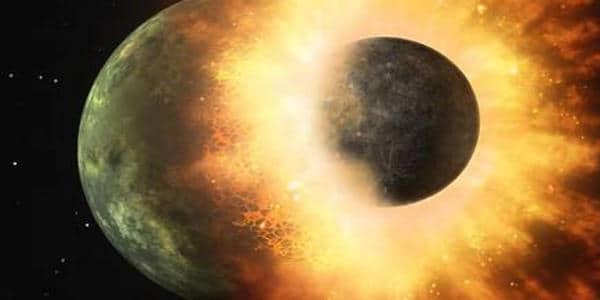
“It’s exciting that some of our simulations produced this orbiting clump of material that isn’t much smaller than the Moon, with a disc of additional material surrounding the post-impact Earth that would help the clump grow in mass over time.” I wouldn’t say this is the Moon, but it’s a very interesting place to keep looking.” The Durham-led research team will now run additional simulations to see what effect changing the mass, speed, and spinning rate of both the target and impactor has on the formation of a potential Moon.
Co-author Dr. Vincent Eke, of Durham University’s Institute for Computational Cosmology, said: “We get a number of different outcomes depending upon whether or not we introduce spin to Theia before it crashes into the early Earth.
“It’s especially fascinating that when Theia has no or very little spin, the impact with the early Earth leaves a trail of debris behind, which in some cases includes a body large enough to be called a proto-Moon.” There could be a number of unexplored collisions that could bring us even closer to understanding how the Moon formed in the first place.”
Solar system
They crashed a Mars-sized ancient planet called Theia – which is thought to have existed in our solar system – into the early Earth in computer simulations. They got different results depending on the size and direction of Theia’s spin, including no spin at all.
At one extreme, the collision merged the two objects together, whereas at the other, the impact was a grazing hit-and-run. Importantly, when no spin was added to Theia, the collision produced a self-gravitating clump of material with roughly 80% the mass of the Moon. When a small amount of spin was added, another Moon-like object was created.
Potential Moon
According to our researchers, this clump, which is seen in simulations settling into an orbit around the post-impact Earth, would grow by sweeping up the debris disc that surrounds our planet. The clump also has a small iron core similar to that of the Moon, as well as an outer layer made of materials from the early Earth and Theia.
Our researchers are quick to point out that this isn’t definitive proof of the Moon’s origin, but it is a very interesting place to look further. They intend to run additional simulations in which the mass, speed, and spinning rate of the early Earth and Theia are changed to see what effect this has on the formation of a potential Moon.
